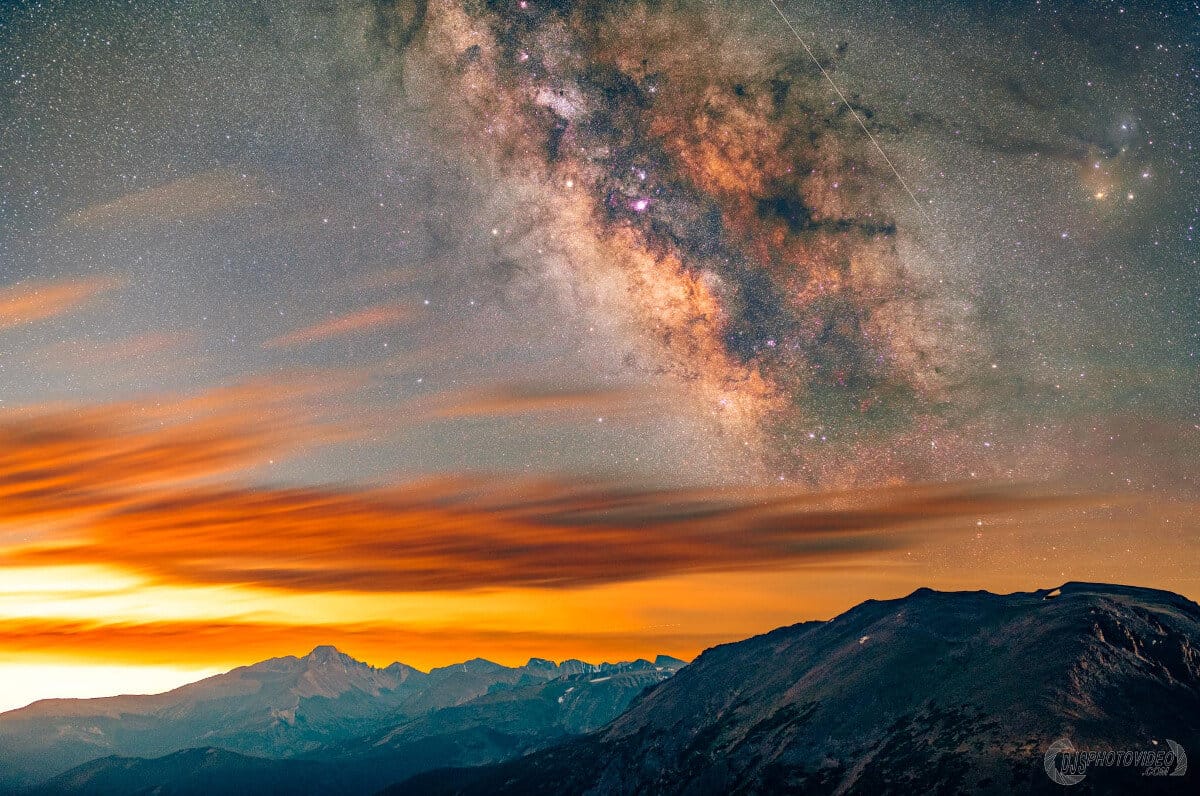In this interview, New Jersey photographer Daniel Stein answers a few questions about how he goes about taking his stunning astrophotography images.
In particular, we focus on his amazing picture below of the Milky Way reflecting in a glimmering pool of water atop Cascade Mountain in the Adirondacks, New York.
How Did You Plan the Shot?
I planned to shoot the Perseids meteor shower a few days prior to its peak over the weekend of August 11th, 2018. I decided to head up to the Catskills, NY as I knew the skies were decently dark without a terribly long round trip drive.
Thursday evening of August 10th came, and the weather reports started to show their worst. I had to rethink my strategy quickly. The following morning, I called to cancel my Catskills campground reservation and book a new one in the Adirondacks while on break at work.
According to multiple sources, it was supposed to be mostly clear further upstate. I used Google Weather, WeatherBug, Weather.com, and my favorite YR NRK Meteorologisk Institutt.
From there, I quickly researched locations and decided to hike Cascade Mountain that night.
According to Alltrails and individual hiking blogs, it would be a good trail for my first of the 46er high peaks hikes.
The Dark Site Finder map also indicated less light pollution than the Catskills.
I planned to head towards the Adirondacks right after work as the drive would take me twice as long as getting to the Catskills.
Not knowing what to expect, I grabbed my gear and set off at around 2 pm. I got to my campsite at 9 pm and began the hike at 10 pm. I summited around 11:30 pm and looked for compositions.
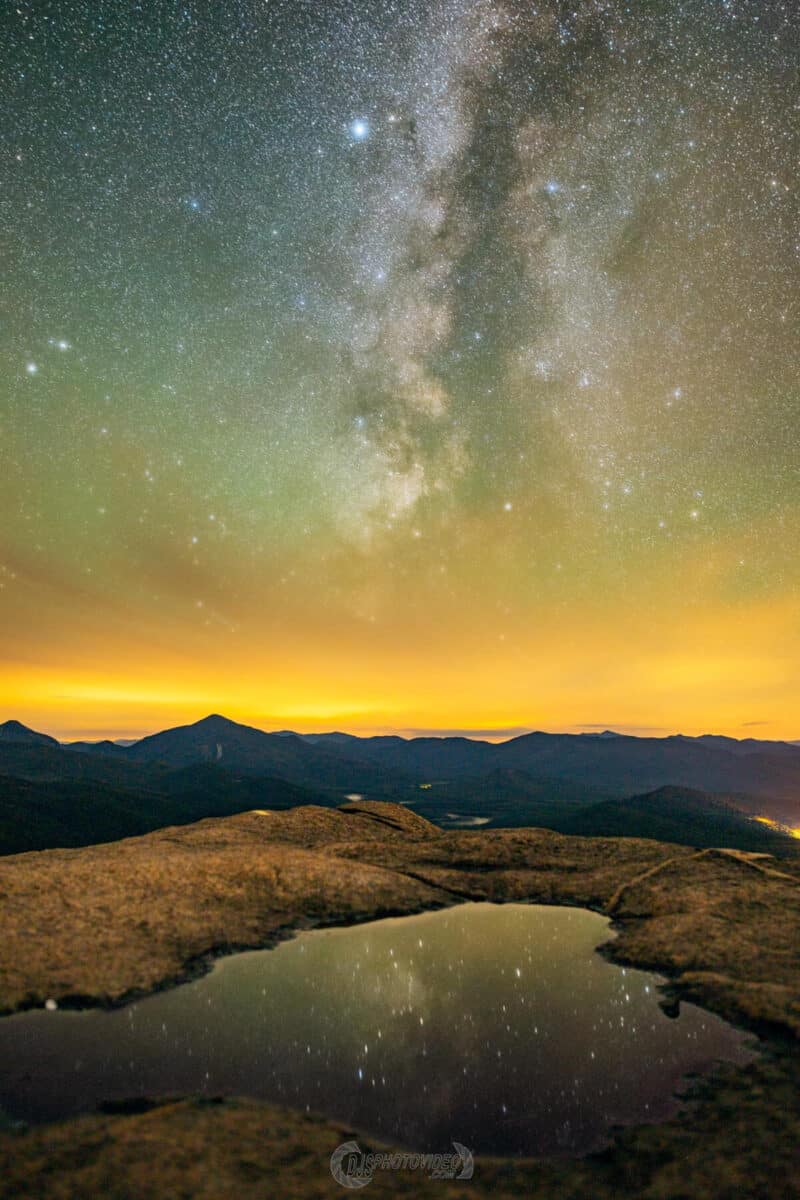
What Equipment Did You Use?
I use a Canon 5D Mark IV and Nikon D850.
For this shot in particular, I used the Canon with my 24-70 f/2.8L II. The lens is versatile, yet sharp even wide open making it great for astro work.
I brought two of my Manfrotto carbon fiber tripods up there with me as well. The tripods are light, yet extremely strong and capable of a heavier rig such as one with my iOptron Skyguider Pro.
My favorite setup is with my D850, Sigma 20mm f/1.4 ART, and the iOptron SkyGuider Pro atop the full-size Manfrotto tripod.
This setup allows for extremely detailed tracked shots of the Milky Way without having to use panorama techniques.
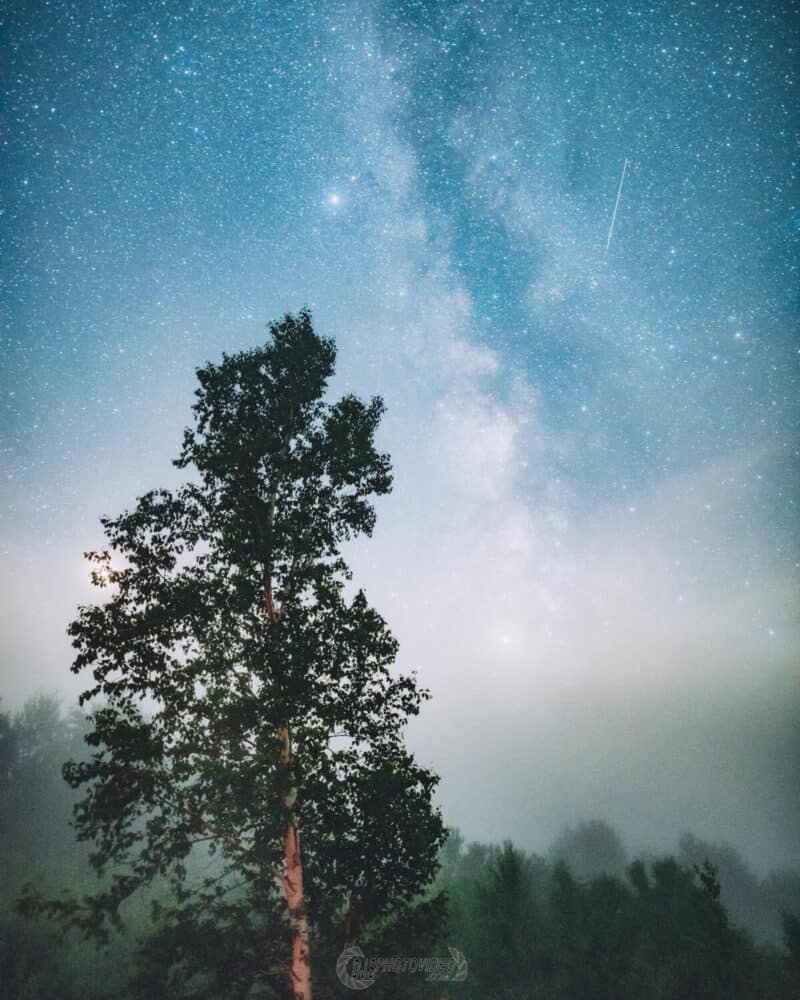
How Did You Compose the Shot?
This shot in particular was a challenge to compose as I wanted to verify the reflection in the puddle would be visible.
I used a tactical flashlight on low power to frame the shot in live view. Once composed, I digitally zoomed on Mars as it was bright making it easier to focus. With focus achieved, I took a 3-second exposure at ISO 25600 to gauge my composition.
After a couple of tweaks, I was satisfied, and calculated my actual exposure using the NPF rule.
This allowed me to get a 20-second exposure with little to no star trails at f/2.8, but the calculated ISO speed of 6400 was too high for my liking.
I decided to use the 5D’s built-in intervalometer to shoot an 11-shot sequence for stacking in post. These shots were taken with long exposure noise reduction off.
At the end of the sequence, I decided to take one 8-minute shot at f/2.8 and ISO 800 to capture the magic of the mountains. Had I not done this, they would appear as a silhouette which is not what I wanted.
I turned the built-in long exposure noise reduction on for this shot as it would do a good job cancelling hot pixels.
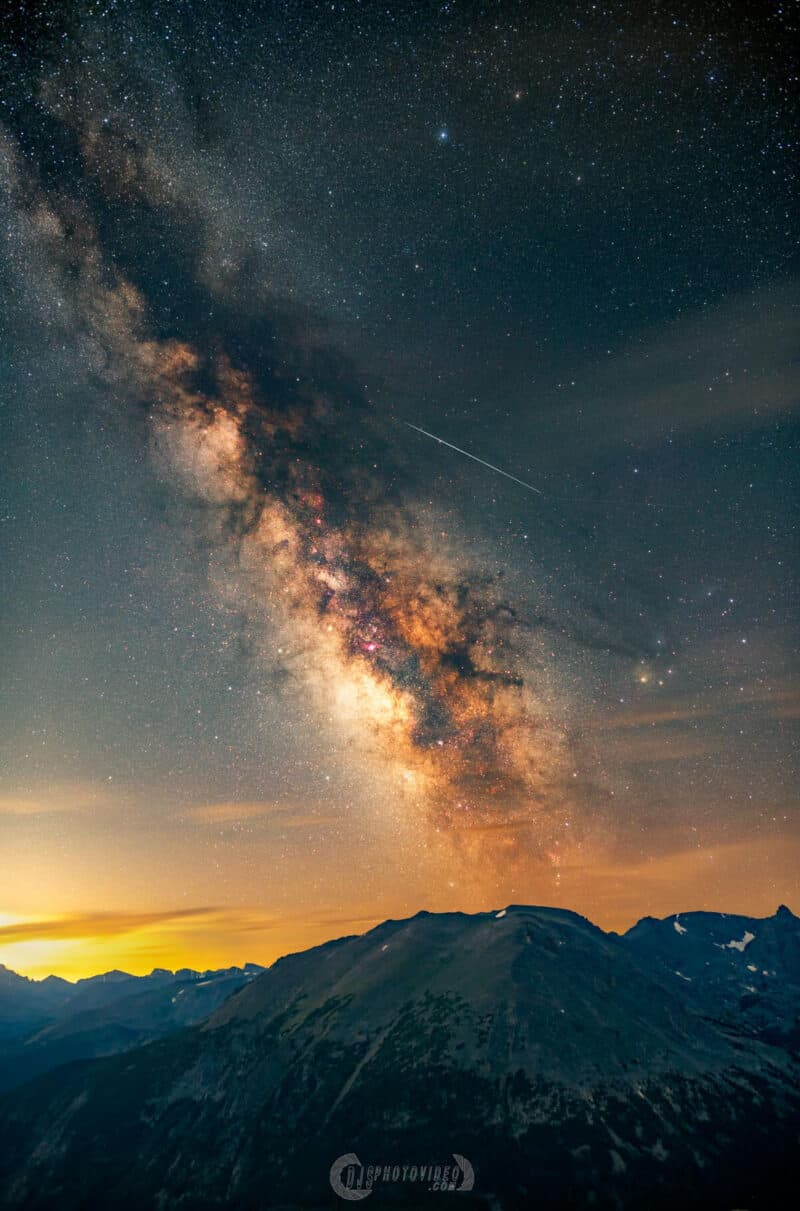
What Post-Processing Did You Do?
In post, I first organized the shoot by its own folder with the date. Each camera inside the folder would have its own subfolder respectively.
After an import into Lightroom, I exported the 11 shots into 16-bit TIFFs for stacking.
I used StarryLandscapeStacker for this and put the output TIFF file into Photoshop for further adjustments.
I then had to mask and create another stack sequence for the reflection in the puddle because the stars align in the opposite direction from the sky. I put this mask in the same Photoshop file.
I then opened the 8-minute foreground shot in Photoshop and masked the layers together and applied my arrangement of tweaks.
I typically steer away from presets, all of my work is done manually.
I am all self-taught, but I did take many photography classes throughout school. While these courses may not have directly improved my techniques, they have taught me how I myself can become a better photographer with every photo. Most of these classes were in the darkroom or analog-based.
“The internet is the best place to learn about astrophotography, but it is not the best way to engage in the hobby.”
Can You Recommend Any Learning Resources For Other Astrophotographers?
The internet is the best place to learn about astrophotography, but it is not the best way to engage in the hobby.
You are best off by researching tutorials at your own pace, then going out yourself and putting them to work, catering what techniques specifically apply to your own workflow.
When you come back from a shoot, it may be helpful to post your work on a forum and receive feedback. Take every piece of feedback you get seriously; good or bad. Use it and learn from it.
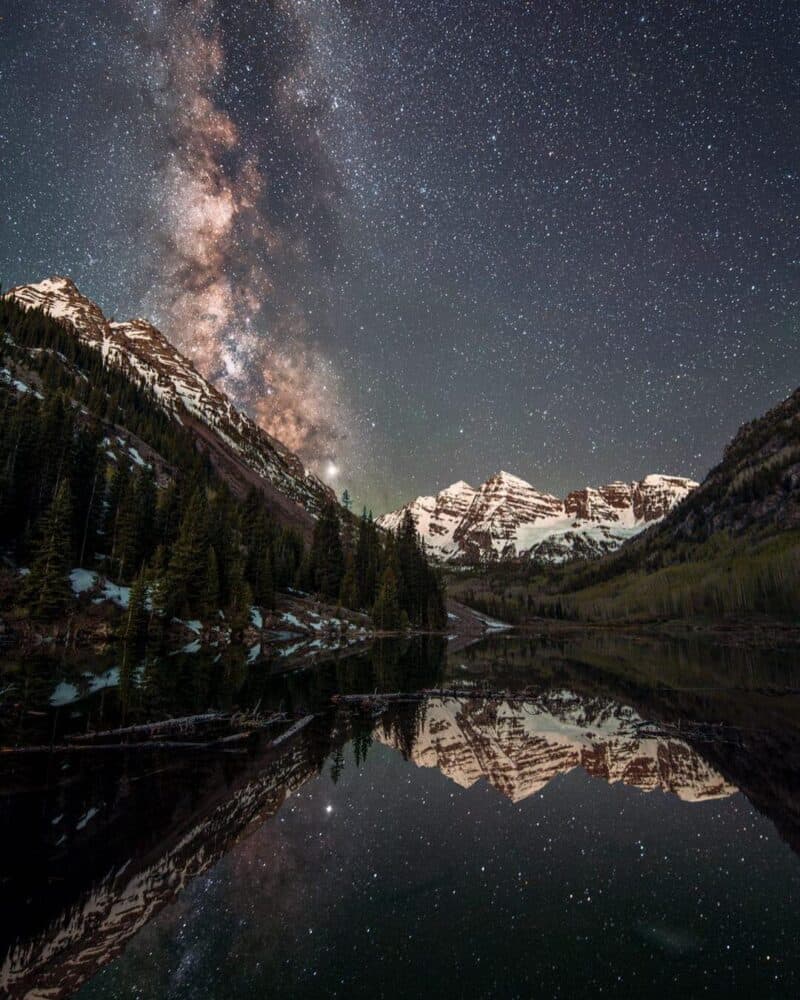
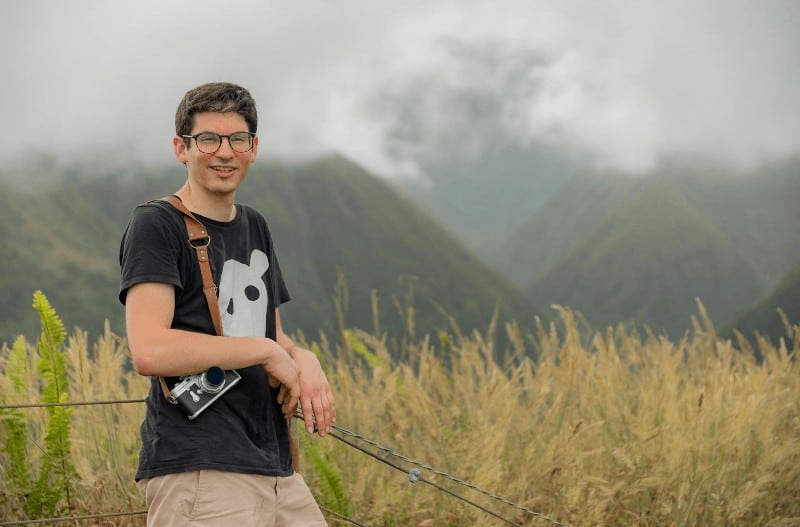
About You – Daniel Stein
I do photography strictly as a hobby and I intend for it to remain as such. I am a commercial plumbing contractor in northern New Jersey, USA working in our family business here which has been around since the 60’s.
I got into astrophotography in 2012 but really started shooting more in 2014. I have since done many different shoots covering a plethora of genres. I have shot a lot of concerts, did a few years of photojournalism, portraits, and more. Astrophotography is still my number one.
You can find me on Instagram @danieljstein and my website, djsphotovideo.com.
(This interview was first published on September 2, 2018.)


